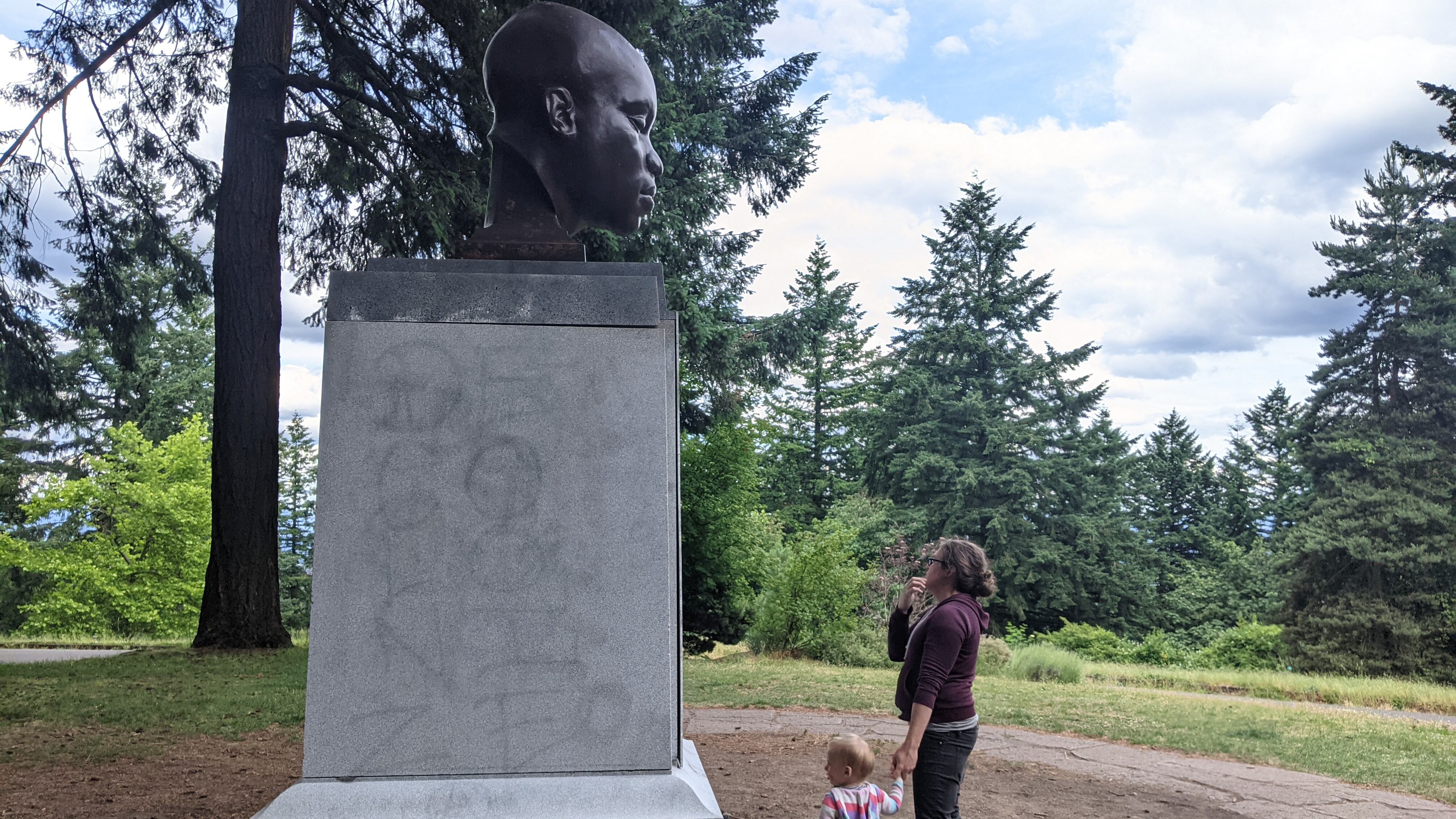For eight months, it’s been among the best-kept secrets in Portland: Who surreptitiously installed a bust of York atop Mount Tabor in February?
The sculptor has now revealed his identity exclusively to WW.
Todd McGrain is a onetime Guggenheim fellow who creates bronze sculptures in his Richmond neighborhood studio.
McGrain, 60, is best known for enormous sculptures of extinct birds, installed in the places where they were last seen.
In February, he built a bust of York, the only Black man in the Corps of Discovery, out of styrofoam painted bronze, and installed it on the pedestal where a statue of Oregonian editor Harvey Scott once stood.
“It really just came to me, all at once: That’s where York belonged, on the top of Mount Tabor,” he tells WW. “That empty pedestal, to a sculptor, just looks like an invitation.”
The installation was destroyed last month by a vandal, who toppled the bust and cut off its nose.
McGrain says he’s identifying himself now in order to offer to sculpt a permanent bronze bust of York for the site without pay for his time or effort. (The casting itself would require fundraising.)
“It may be a good thing to have a permanent York memorial on Mount Tabor,” he says. “If that were to happen, I’m available. I have everything I need to transfer that sculpture into bronze. It would be a donation.”
Officials with the Regional Arts & Culture Council have pledged a public process to determine what art should be permanently placed atop Mount Tabor, the volcanic cinder cone in Southeast Portland. McGrain says he would be delighted even to participate in that discussion.
McGrain had considered sculpting a portrayal of York for nearly a decade, he says. The sculptor, who is white, was compelled by the story of York, a Black man who traveled the width of the continent with the Lewis and Clark expedition while being treated as someone else’s property. But it was only this winter, after a year of racial justice protests and the toppling of the Scott statue, that the idea occurred to McGrain to install a bust in the park.
He already had a clay study of the head, which a Ghanaian friend has modeled for. (Some historians believe York, an enslaved man, was from Ghana.)
Crafting the sculpture out of polyurethane and painting it took a month. Installing it took an hour.
McGrain says he built a rickshaw out of a disassembled wheelchair to carry the bust. On a misty February night—he thinks it was Feb. 19 or 20—he and two friends strapped the bust to the top of his car, drove to the base of Tabor, then wheeled York up the side of the mountain. The trio lowered the sculpture onto its base.
“As we undid the bolts, they made a kind of squeaking noise,” he recalls. “That noise set off a pack of coyotes, which began to sing with us. They sounded like they were all around us, and they were quite loud—really laughing and, and howling. We had designed it and plotted it so well that I got out of bed at two o’clock in the morning. And I was back in bed by 3.”
McGrain expected the installation to last a weekend at most. He was surprised by the chord the work struck with Portlanders—who for months made pilgrimages up Mount Tabor to gaze at the bust.
He’s not especially troubled by the vandalism: He found the destruction of the bust sad, but also a useful reminder that racism remains present in Portland.
What affected him more was seeing how many people wanted to honor York, too. In an interview Tuesday, his voice choked with emotion as he recalled watching people respond to the sculpture.
“I feel that art is really completed by the people who see it,” McGrain says. “I saw a grandfather asking his son or grandson to take his hat off, out of respect. I’ve made public art before, but I don’t think I’ve ever seen people bring such personal meaning to the experience of public art. I found it very touching. Many people came to the story for the first time…that difficult story of York and the legacy of slavery, which we’re still haunted by.
“If that sculpture did anything to help move us in that direction, I’m really honored to be a part of it,” he says. “I’m honored to have been a part of this experience.”
